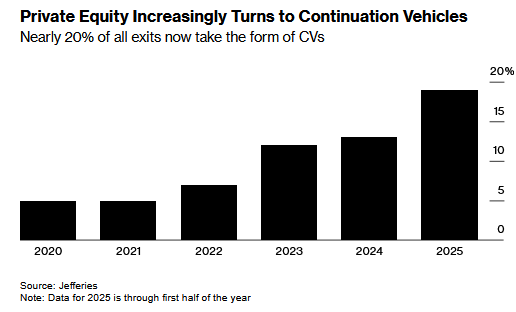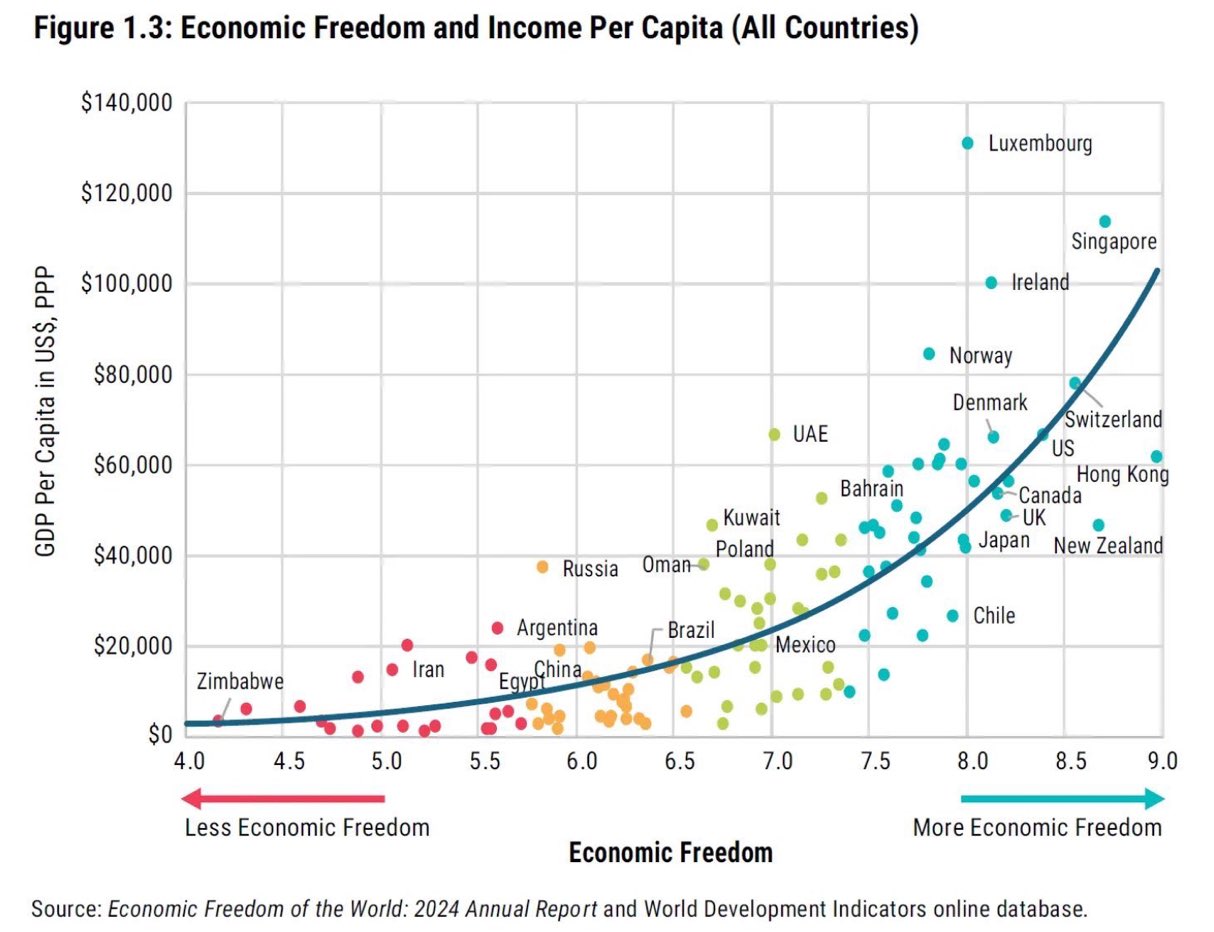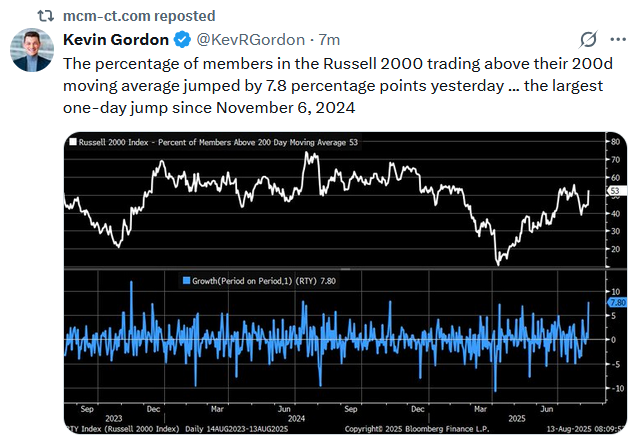Oil prices dip but set for weekly surge over fresh sanctions on Russian oil
Private equity funds often buy assets intending to sell them and realize a profit over a specific period. However, recently it’s become more common that their assets are not ready to be sold when they had initially forecasted. While the fund can hold the assets longer than expected, fundholders may demand liquidity.
Instead of selling the assets before they achieve the maximum potential, private equity funds are using CVs to meet their clients’ demands and hold onto assets. CVs are new private equity funds that allow a firm to hold onto assets longer than its original expectations and provide liquidity to its existing fundholders.
The graph below, courtesy of Bloomberg and Jefferies, shows that almost 20% of the time when private equity returns cash to its fundholders, the money is not coming from the sale of an asset, but from CVs, or new fundholders buying the asset. Furthermore, the usage of CVs is increasing rapidly. Interestingly, we are also seeing that older CVs are now being funded with newer CVs, or CV-squareds.
While using CVs to allow assets additional time to accrue to an acceptable valuation makes sense, it also raises a question. Why are the assets not attaining their expected value on time? Or said differently, why are the time-weighted returns less than what was initially projected? Money has been pouring into private equity funds.
Consequently, fund managers have more competition for deals to invest in and must therefore accept a lower return and or investments with more questionable outcomes. As a result, the quality and potential returns are declining. Essentially, the private equity market is maturing, and returns are heading toward those of the public equity markets.

The Benefits Of Free Markets And Capitalism In One Graph
We stumbled across the graph below and thought it was worth sharing. We have written volumes on the benefits of capitalism and free markets. Additionally, we spend a lot of time writing about hindrances to capitalism, be it from the government, the Federal Reserve, or private sector actions.
Instead of the tens of thousands of words we have spilled on the topic, the graph below shows with no uncertainty that economic freedom is extremely correlated to the aggregate wealth of a nation’s citizens. Simply, the more economic freedom a nation’s citizens and corporations have, the greater the wealth per person.
If we were to make one criticism of the graph below, it would be that we would want to see if the graph looks the same using median incomes instead of total income per person. The point being that as the wealth divide widens, the benefits of economic freedom are tilted toward the wealthy and not the broader population. In other words, how much do the hundreds of billions in income earned by the likes of Jeff Bezos and Bill Gates skew the data?

Tweet of the Day

